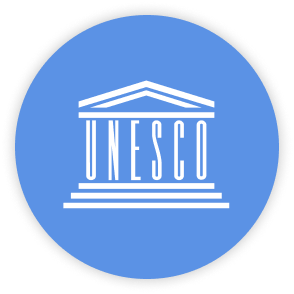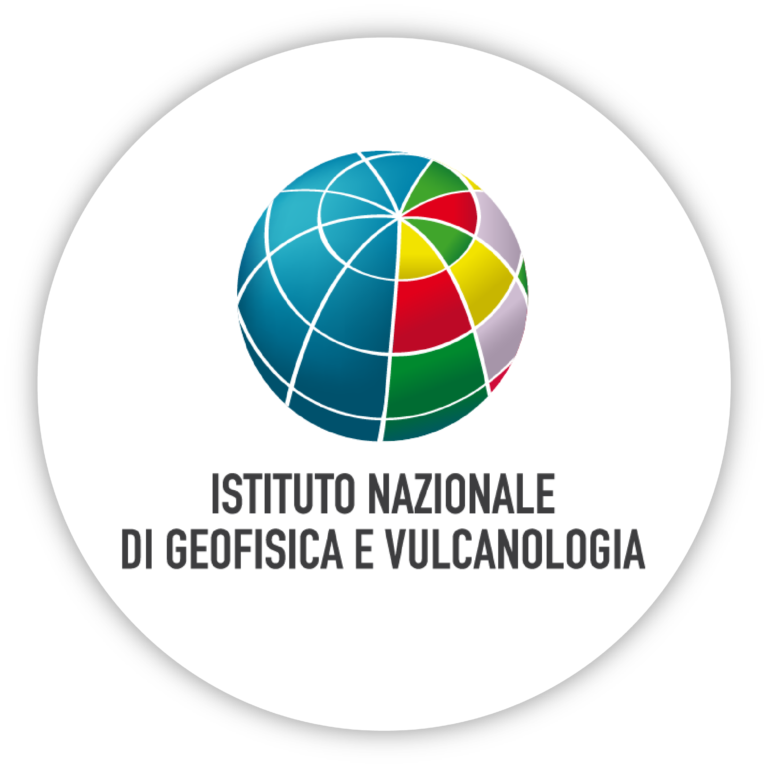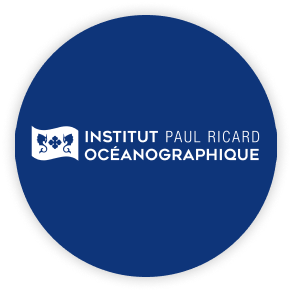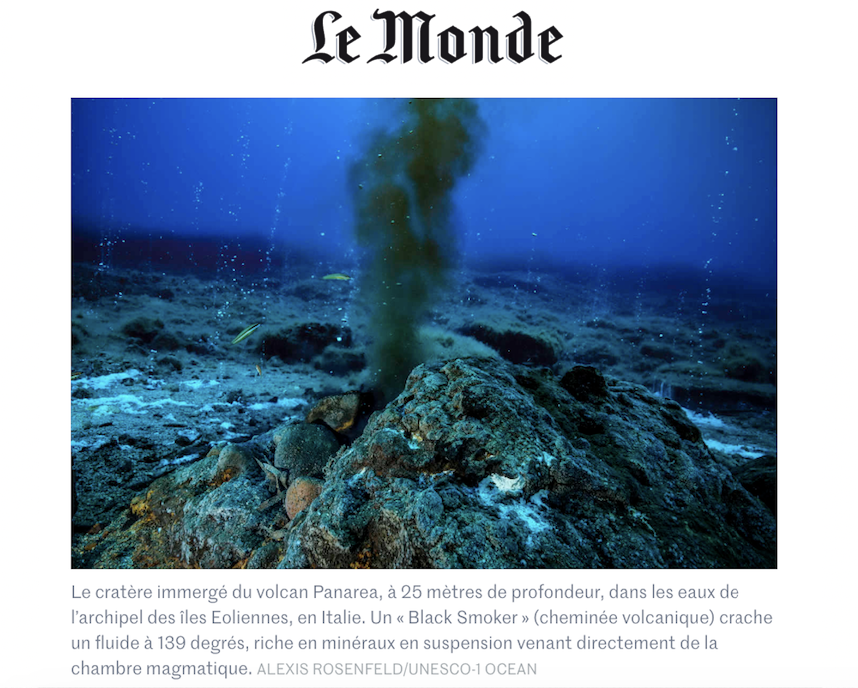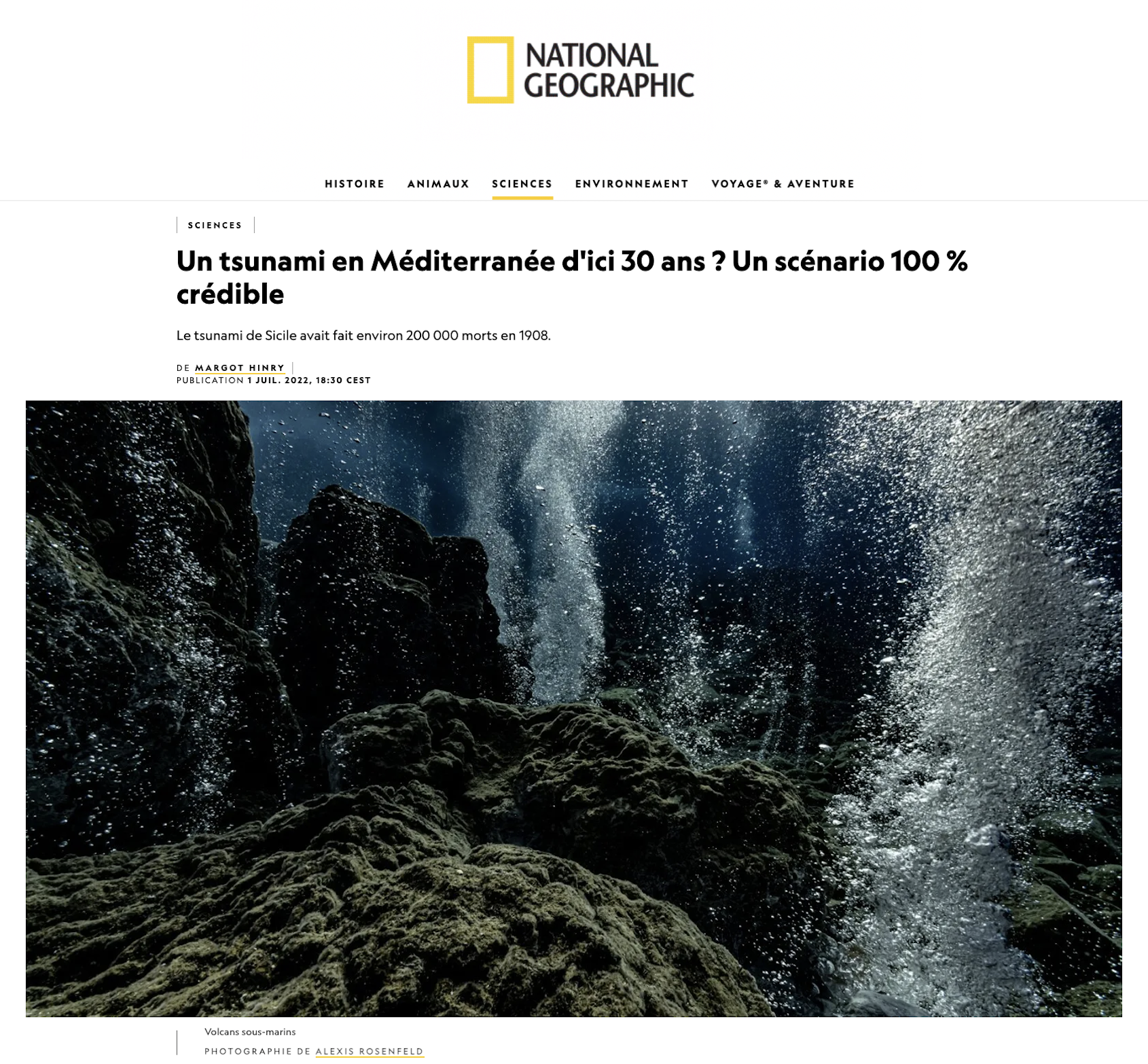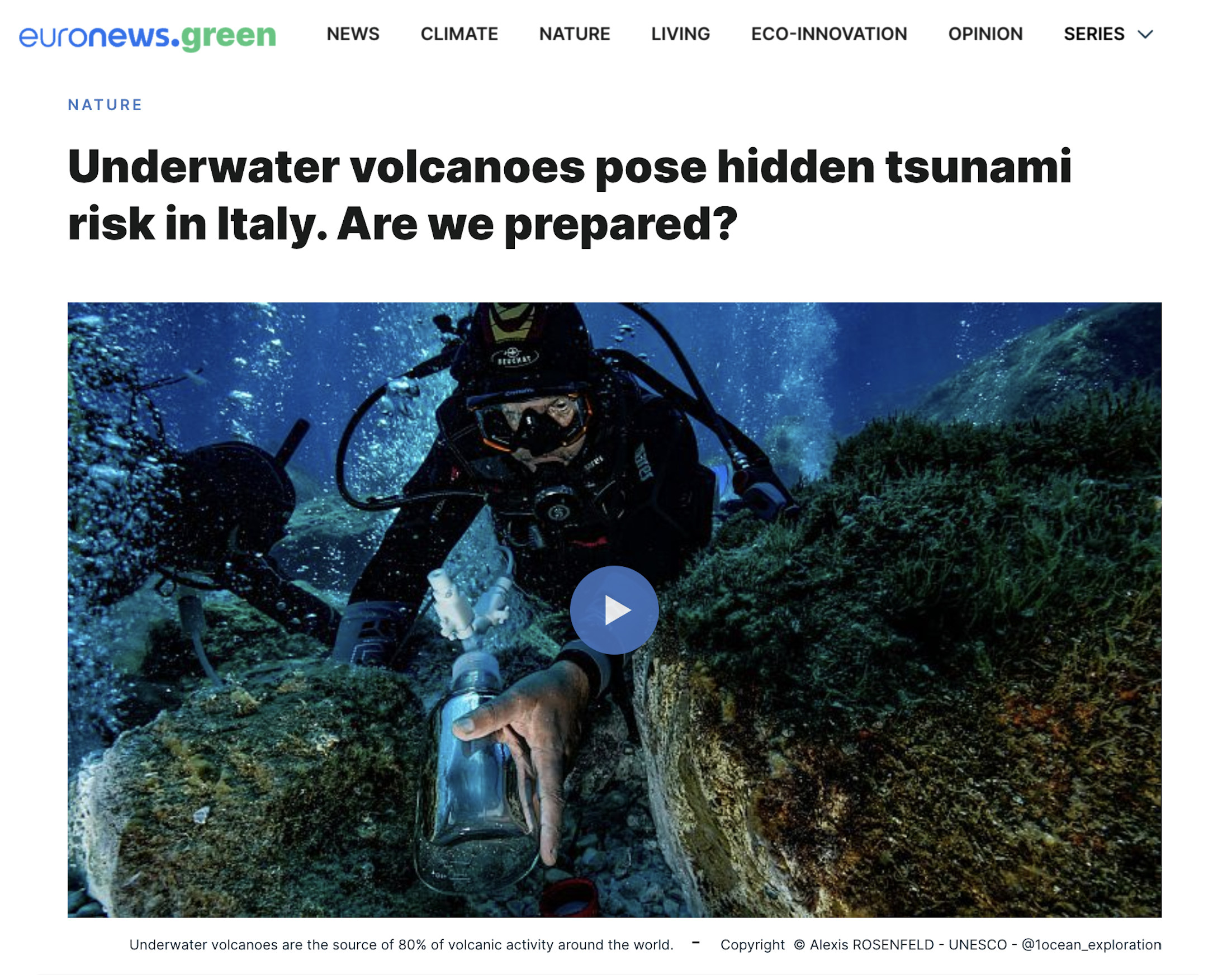20,000 Volcanoes Under the Sea
A mission to the bowels of the Earth, in search of the origin of life.
Volcanology
For almost a year now, activity at the Stromboli volcano has redoubled, generating landslides and thick clouds of smoke that have alarmed specialists. The first witness to intense volcanic activity in the Aeolian Islands, Stromboli is one of the last two active land volcanoes in the Sicilian archipelago. However, many of its relatives lurk beneath the surface. According to NASA estimates, there are over a million volcanoes on the seafloor - 80% of the planet's total.



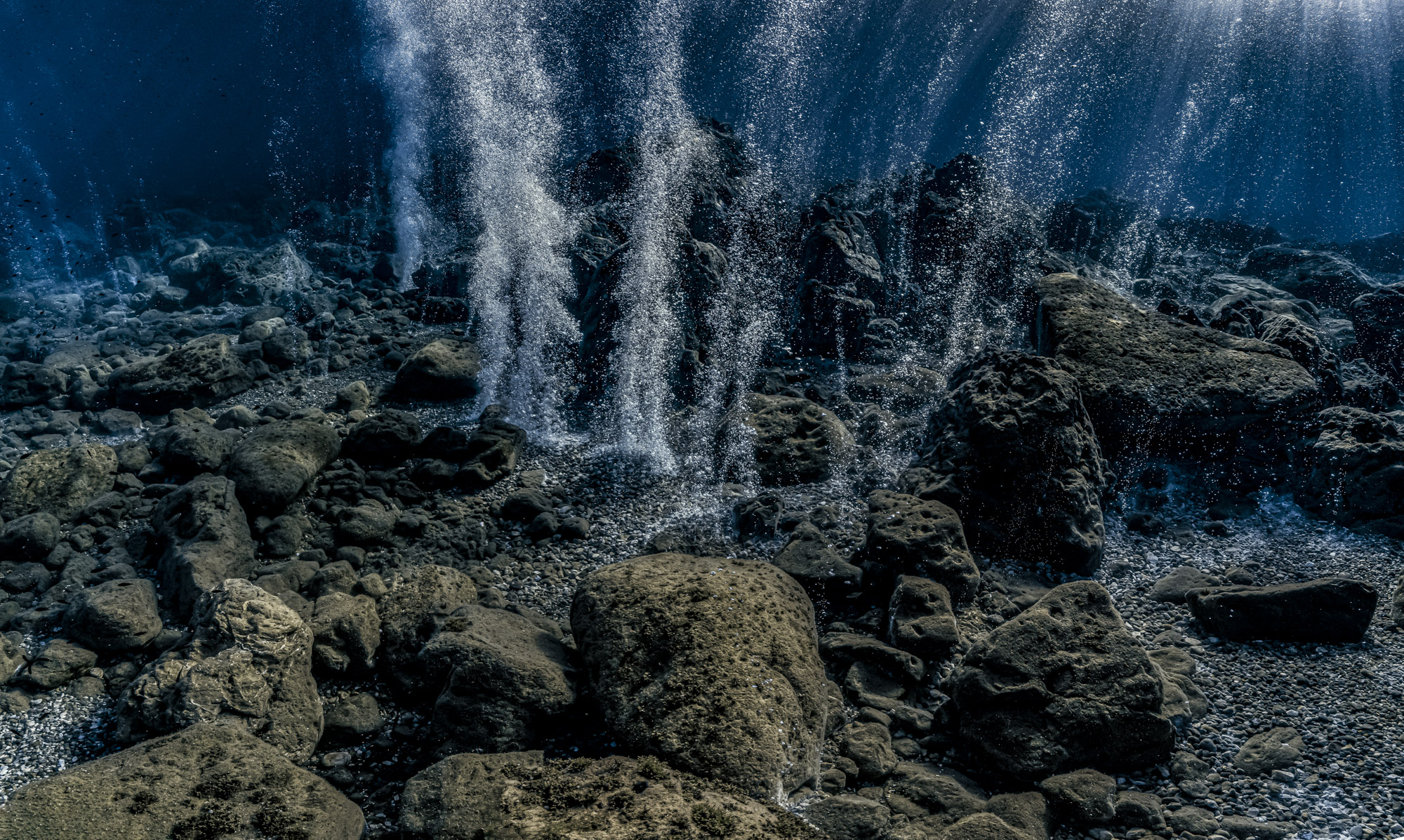





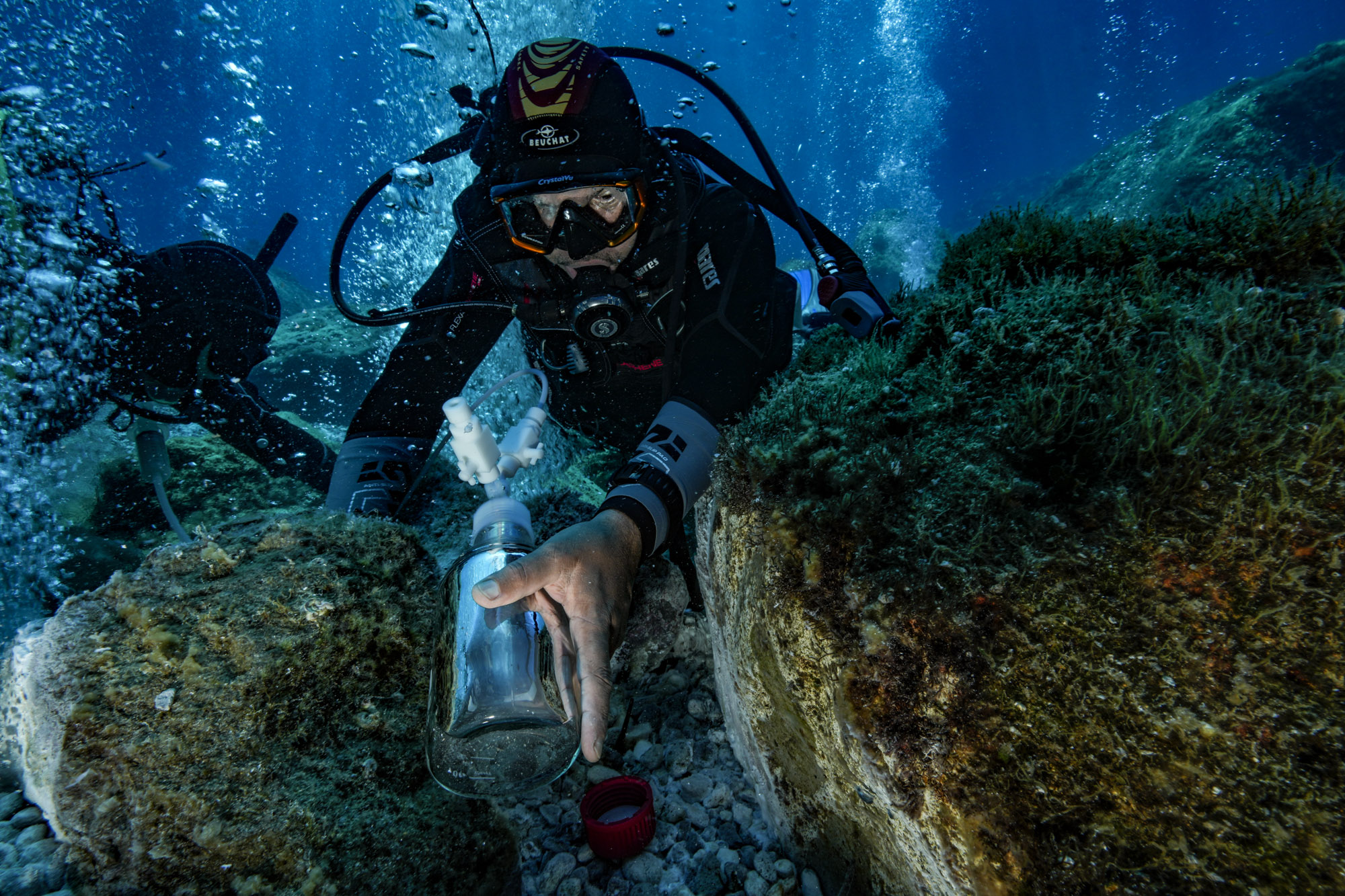
DIVING IN THE AEOLIAN ISLANDS, AT THE HEART OF ONE OF EUROPE'S LARGEST VOLCANIC SYSTEMS
The Aeolian archipelago comprises 7 main islands: Alicudi, Filicudi, Lipari, Panarea, Salina, Stromboli and Vulcano. Located to the north of the Sicilian coast, they form part of a vast volcanic system that also includes the volcanoes of the southern Tyrrhenian basin, such as Vesuvius and Etna. Listed as a UNESCO World Heritage Site, the Aeolian Islands are home to one of the largest concentrations of volcanoes on the old continent.
Although invisible from the surface, volcanoes are also very active at depth. In spring 2022, a 1 OCEAN exploration mission has been organized to explore the underwater Panarea caldera. It will accompany a scientific mission from INGV (Institut National de Géophysique et de Volcanologie) led by volcanologist Francesco Italiano.
The first dive is breathtaking: at a depth of just a few metres, permanent eruptions of gas coming directly from the volcano's magma chamber escape from the bowels of the Earth to form impressive curtains of bubbles. In the caldera, some sites release more than a million liters of gas a day.
The next stage of our exploration takes us much deeper, to a depth of over seventy meters. On their last mission, the INGV divers discovered an exceptional site: The Smoking Land. Here, the seabed is covered with hydrothermal vents, to which sulfur has given a characteristic orange color. They continuously expel high-temperature acidic fluids.
For photographer Alexis Rosenfeld, it's a breathtaking sight: "The underwater volcanoes of Panarea are one of the most striking landscapes I've ever seen. You're sometimes more than seventy meters below the surface, right in the middle of a field of volcanic vents spewing hot, toxic gases and fluids... It's a breathtaking atmosphere, where you're both enveloped by the infinite silence of the ocean and a witness to this Dantesque spectacle, a bit like standing at the gates of hell. You realize that the Earth is alive. From the surface, you don't suspect a thing."
UNDERWATER VOLCANOES, THE CRADLE OF LIFE
Paradoxically, the extreme conditions on the seabed could also hold the key to one of mankind's greatest questions: the origin of life. Indeed, scientists believe that it is around these volcanic eruptions that the first organisms were born; it is here that the mineral is transformed into life. Volcanologist Francesco Italiano explains: "It's in these hydrothermal vents that chemical compounds are transformed into living matter. This is where life begins."
The seabed of the Panarea caldera is dotted with the white spots usually found at the base of gas columns. These spots are actually clusters of bacteria that feed mainly on carbon. They are the first link in the food chain, the basis of terrestrial ecosystems.
IDMAR, A JOINT SCIENTIFIC LABORATORY
Francesco Italiano assures us: "Panarea is a unique place. It's a natural laboratory where many different scientific disciplines can meet and work together.
Together with the INFN (Institut National de Physique Nucléaire) and the CNR (Centre National de Recherche), the volcanologist and other INGV researchers are creating a large-scale project around Sicily: the IDMAR project. At the heart of this project is a multi-disciplinary scientific hosting and sharing platform, the aim of which is to collect and centralize a multitude of data on an ongoing basis. IDMAR is science working together to improve our understanding of underwater phenomena in Sicily.
PANAREA - STROMBOLI, AN UNSTABLE AXIS
Thanks to this program, Francesco Italiano and his team can listen to the volcanoes all the time. In recent years, they have observed worrying changes in the behavior of the region's volcanoes. Stromboli, in particular, is keeping them on their toes: for some time now, analyses have been showing abnormal instability, leading scientists to fear a major event:
"Stromboli is an active volcano. It constantly generates low-intensity explosions, but sometimes its activity changes its nature. It then produces lava flows, but also huge explosions that can be very dangerous for humans." - Francesco Italiano
A few years ago, a phreatic explosion in the Panarea caldera opened a fault all the way to Stromboli, causing the volcano to collapse. This gas eruption released over a billion liters of carbon dioxide every day. Scientists recently made an important discovery: Stromboli and the Panarea caldera are in fact linked to a single magma chamber.
TSUNAMIS: A MAJOR RISK AND COORDINATED MANAGEMENT BY COI-UNESCO
One of the scientists' main concerns is the possibility that an eruption could generate a large-scale tsunami, posing a major risk to the region's populations.
"One of the risks is the possibility of a tsunami. The main problem in dealing with this risk is the short distance between the islands. A tsunami travels at very high speed, at least 300 km/h. A tsunami can therefore reach one of the islands in just a few minutes."
Tsunamis are a major hazard for coastal areas, and can travel great distances. In 1960, an earthquake of magnitude 9.5 - the highest ever recorded - took place near Valdivia, Chile. The resulting tsunami crossed the entire Pacific Ocean, and damage was recorded as far away as the coast of Japan, some 17,000 kilometers from the epicenter.
Faced with this eventuality, UNESCO is working on a training program for coastal populations. The organization already has extensive experience in this field, through its Intergovernmental Oceanographic Commission (IOC), which has coordinated the Pacific Tsunami Warning System (PTWS) since the 1960s. Since 2005, three new systems have been added to the program: the CTWS for the Caribbean, the IOTWS for the Indian Ocean and the NEAMTWS for the Northeast Atlantic and Mediterranean.
In January 2022, this UNESCO-coordinated warning system enabled a rapid response to a tsunami generated by an underwater volcanic eruption in the Tonga Islands. Although the material damage was considerable, hundreds of human lives were saved thanks to excellent multilateral cooperation.
This mission was carried out in partnership with UNESCO, Sony, La Caz'a Productions, Dream Yacht Charter and the Paul Ricard Oceanological Institute.
Become a partner of the 1OCEAN Foundation and support the cause of marine wildlife!



